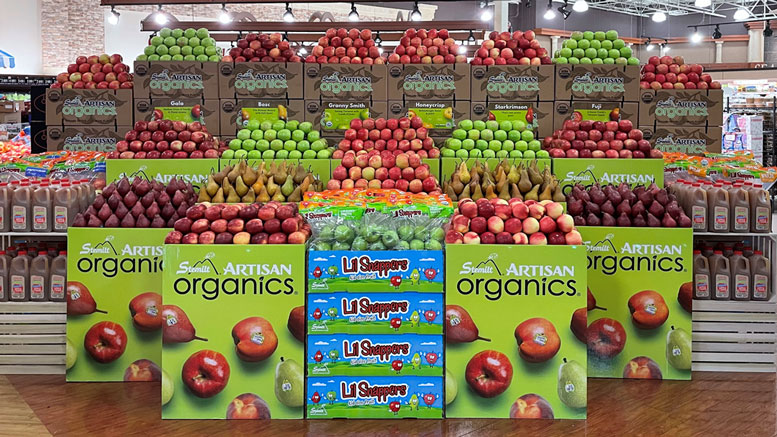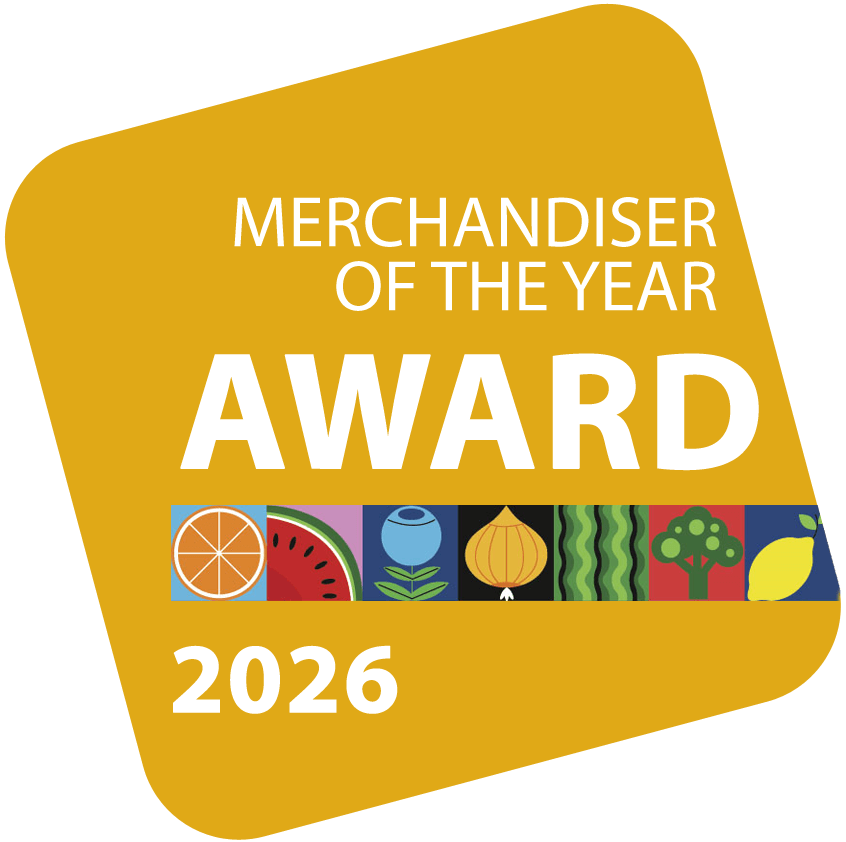Organic Produce Sales Trending Up
July 1, 2024 | 7 min to read
Despite inflation, consumers persist in their demand for organic produce, with the Organic Trade Association reporting a 2.6% sales growth to $20.5 billion in 2023. Millennials and Gen Z drive this demand, valuing sustainability and health. The USDA organic seal remains the most trusted certification, fostering consumer confidence. New rules aim to strengthen organic enforcement and transparency, while retailers encourage education on organic benefits to further boost interest and sales in the market.

PHOTO COURTESY FOUR SEASONS PRODUCE
Consumers continue to choose organic amid challenges.
Despite inflationary pressure, consumers keep demanding fresh organic produce. The latest reports of the Organic Trade Association (OTA), Washington, D.C., have delivered positive news of sales increases for the produce sector in 2023.
An OTA survey released May 14, 2024, reports the organic fresh fruit and vegetable category grew by 2.6% to $20.5 billion. Organic produce accounts for more than 15% of U.S. fruit and vegetable sales. Avocados, berries, apples, carrots and packaged salads were the top sellers. Organic banana growth was stronger than nonorganic bananas.
OPTIMISM PREVAILS
“… the current growth shows that consumers continue to choose organic amidst economic challenges and price increases,” comments Tom Chapman, OTA co-chief executive officer.
OTA’s research has shown consistent and growing interest in organic from Millennials and Gen Z. OTA points out those generations grew up with organic and sustainability, and the health of people and the planet are all top of mind for those consumers, which industry experts see as an opportunity for organic.
ORGANIC PERCEPTION
The industry recognizes various factors can affect the perception of organic, and inhibit its full potential.
The Organic Produce Network’s (OPN) May 9, 2024, newsletter reports organic is a trusted claim, and consumers more familiar with organic attributes are more willing to pay for U.S. Department of Agriculture (USDA)-certified organic products. Moreover, consumers trust the certifications with which they are most familiar, and 70% of consumers trust the USDA organic seal, which is the most trusted agricultural label.
Consumers unaware of organic benefits, who believe organic does not justify higher prices, change when they learn about its attributes. The benefits cited include prohibiting GMOs, growth hormones, antibiotics and most pesticides. Once knowledgeable, the justification for paying a premium price can jump by 16%.

PRODUCE BUSINESS/SUSAN CROWELL PHOTO
Consumers show considerable interest in sustainability, but despite that, cost, lack of clarity, and access can limit purchases.
Because the USDA organic seal is the only federally backed certification that requires transparency and has fraud penalties, consumers can be more confident USDA seal products meet rules and regulations.
However, education is still essential to connect with consumers. The report found 71% of consumers are aware that organic products are produced without synthetic pesticides. But only 60% and 59% know that GMOs and artificial colors and flavors or preservatives are not used. The report urges retailers and brands to drive education toward the USDA attributes.
ENFORCEMENT BOLSTERED CERTIFICATIONS
After a 14-month educational effort, the USDA’s National Organic Program’s (NOP) new rule, “Strengthening Organic Enforcement,” was implemented March 19, 2024. As reported in NOP’s April 11, 2024, newsletter, NOP’s deputy administrator, Dr. Jennifer Tucker, was pleased with the level of compliance.
“A lot of folks are getting the message. To go from about 200 to 740 (new handler certifications) in year-over-year growth tells us we are in the stage of acceptance.”
One measure is the number of valid import certificates that accompany organic products shipped to the U.S. market. The new SEO rule requires them to be associated with an NOP Import Certificate. The rule was designed to improve traceability and oversight of organic imports.
GROWERS, RETAILERS GRASP ORGANIC
Anthony Vineyards, Bakersfield, CA, with 20 years of experience growing and distributing organic grapes, began with the traditional red seedless Flame and green Thompson seedless varieties.
This season, John Harley, vice president of marketing and sales, reports, “It went well with Flame in Coachella Valley, then San Joaquin Valley, and on.”
Anthony Vineyards also grows conventional grapes, plus organic and conventional dates, and some citrus and sweet peppers.
Organic makes up 60% of production for Anthony Vineyards. It lists eight red, seven green, and three black seedless organic grape varieties and it is transitioning to newer varieties.
Commenting on the new organic enforcement rules, Harley says, “We embrace enforcement. Overseeing production on imported products benefits us.”
Without the import rule, the U.S. had to compete with foreign countries, with no control over organic claims.
Viva Tierra Organics, Mount Vernon, WA, shouts “Organic to the Core,” on its site, and follows the seasons to bring fresh fruit to the marketplace. From California, Oregon, and Washington to Peru, Chile, Argentina, New Zealand, and Mexico, apples, pears, kiwifruit, onions, ginger, and stone fruit carry the label.
“At their particular seasons, these provide a consistent, year-round supply of premium fruit,” says Chris Ford, sales and marketing officer, Viva Tierra Organics.
More than 100 growers, with seven to 7,000 acres each, grow the fresh products.
Del Rey Avocado, Fallbrook, CA, has grown, packed and shipped its “world’s most versatile fruit” for three generations. With both conventional and organic, its California avocado varieties include the leading one, Hass, with an excellent shelf life, plus Lamb Hass, Reed and Bacon. The latter two stay green when ripe. All have a season, but Del Rey availability shows Hass from January through October.
Besides California, Del Rey avocados are grown in Mexico, Peru, Chile, and Colombia for their year-round markets. President Patrick Lucy points out, “Each has a peak season, and that’s what we reach. For example, Mexico has three bloom periods, which yield good quality year-round.”
ORGANIC SELLING POINTS
Ford suggests using signs to identify and display organic items. “Make certain people know availability. Push the health benefits of fresh fruits and vegetables. Add value and convenience and place them easy to find in the market.”
Myles Chasser, fruit buyer for Four Seasons Produce, Inc., Ephrata, PA, advises retailers call out big displays, and evaluate any price point differences with conventional produce, and adjust accordingly.
“The biggest downfall is when the product is lost in the department. It’s important to point to the product quality, especially with peak quality. Distinguish between organic and conventional,” Chasser says. “Displays should be full, pretty and fresh.”
The Oberlin, OH, IGA (Independent Grocers Alliance) store, which is near Oberlin College and Conservatory, has a strong organic section. Salads are a big seller and apples, celery and carrots are also popular, reports produce manager, Jake Holowenko. “We used to carry rainbow carrots, but since people were more interested in orange, we now carry only orange. People buy them for juicing. Also, they buy organic wheat grass religiously.”
“Students seem to lean more toward organics, even when prices are a bit higher,” Holowenko adds. “They prefer fresh organic fruits and vegetables.”
At Hennings Market, an independent sixth-generation upscale market near Harleysville, PA, close to Philadelphia, natural and organic products are integrated throughout the store, according to Produce Associate Ty Hughs, although there are separate coolers for organic.
“Also, in the produce department, for many items, racks on top have signs that designate them as organic. Organic strips that border the produce underneath indicate which are organic.”
Hughs adds the store’s manager trains the staff to handle specific questions on organic and conventional items. “Our organic customers are both older and new wave younger,” he says.
ORGANIC GROWTH
Organic foods were first featured in small natural food stores in the 1970s, as consumers became more aware of chemical use in agriculture, according to U.S. Organic Production, 2000-21, published by the Economic Research Service (ERS) of the USDA, March 2023. Natural food stores were the major outlet for decades until conventional grocery retailers began to surpass their organic sales by the mid-2000s. Between 2012 and 2020, that pattern continued.
The National Business Journal, 2021, reports organic food sales in the U.S. have grown at a faster rate than in the overall food market. The food industry’s response has been to broaden organic food access across food marketing channels.
This was accomplished by expanding lower-cost private-label brands in big-box stores, health and natural food stores, and traditional supermarkets, along with new product lines based on ethnic and international food preferences.
Also, new supply chains, including organic food subscriptions, online meal boxes, and organic internet sales have grown.
The top organic retail chains, as estimated by ERS — Walmart, Costco, Kroger, Target and Safeway — underscored the movement of organic food sales into mainstream stores. Studies have found when stores increased organic products, sales increased for the entire category.
16 of 16 article in Produce Business July 2024

